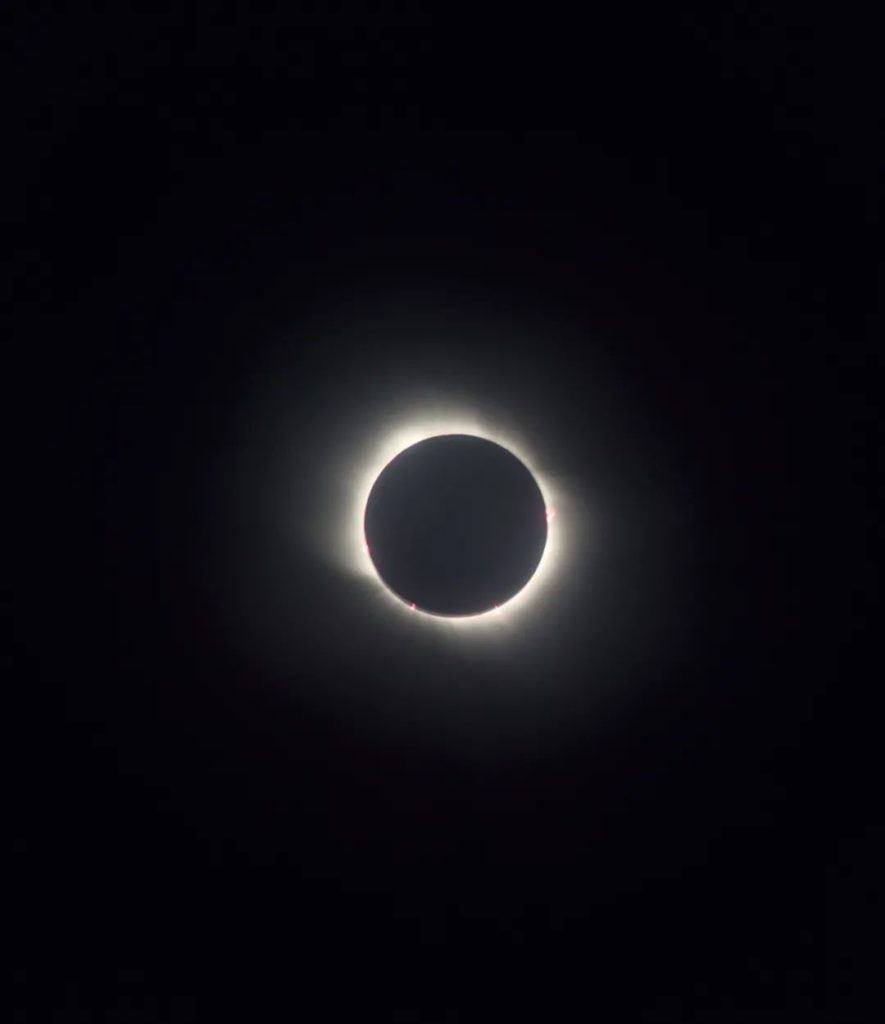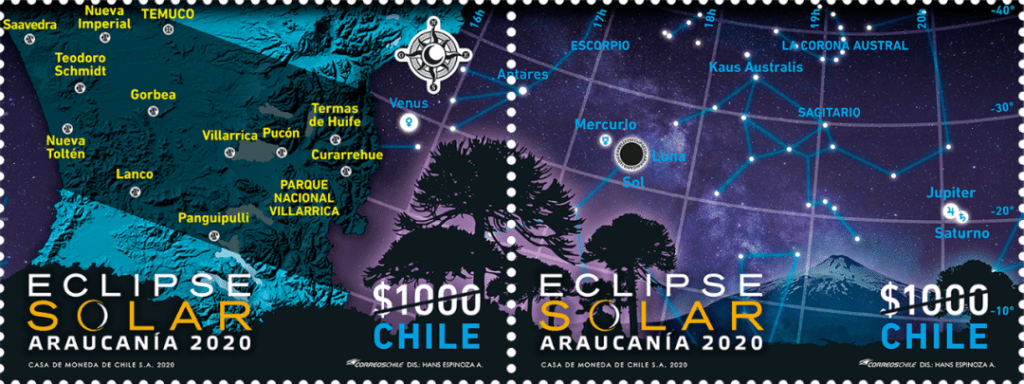With half a month left before the end of 2020, the sun and the moon “partnership” to bring a small surprise to the people of the earth. On the 14th local time, South America ushered in the world’s only total solar eclipse this year.
In many places in southern Chile, which is most suitable for observing a total solar eclipse, unfortunately, it is cloudy and rainy, coupled with the impact of the rebound of the epidemic, astronomers cannot gather on a large scale to witness this astronomical spectacle, and the observation has also been affected to a certain extent.
Don’t worry, the overseas correspondent of Xinhua International took pictures of the solar eclipse phenomenon and invited two astronomers to bring you some tips about the solar eclipse. Let’s watch the solar eclipse online!
What is a total solar eclipse?
When the moon moves between the sun and the earth, and the moon, the sun and the earth are just in a straight line, a solar eclipse will occur. Solar eclipses are divided into total solar eclipses, annular solar eclipses and partial solar eclipses.
A total solar eclipse is an astronomical phenomenon in which the sun’s light is completely blocked by the moon at some places on the earth.
When a total solar eclipse occurs, the area blocked by the moon’s sunlight forms a conical shadow between the moon and earth, and the total solar eclipse can only be seen by brushing its area on the earth’s surface.
Total solar eclipses occur only when the moon is perigee, at which time the conical shadow is longer than the distance between the moon, and the conical shadow can sweep to the earth’s surface.
Because the actual size of the sun is much larger than that of the moon, and the umbra of the moon is relatively small, so a total solar eclipse is usually only visible in a small area of the earth.
Each time a total solar eclipse occurs, the relative positions and angles of the sun, earth and moon are different, and the conical shadows will sweep across different places on the earth.
When a total solar eclipse occurs, the sun is completely covered, the sky and ground are temporarily dark, animals are often ready to sleep or behave abnormally, and temperatures usually drop suddenly.

Where can I see it? When is the next total solar eclipse?
Affected by the epidemic, Gustavo Orella, a Chilean astronomer and professor at the University of Concepción Saint Catholic University, cancelled the total solar eclipse observation plan and stayed in Concepción, where he lived, observing 94% of the solar eclipse.
A total solar eclipse occurred in the southern Chilean region of Araucaña and River region at about 13 o’clock local time on the 14th. This is the only total solar eclipse spectacle in the world in 2020.
This total solar eclipse belt mainly passes through Chile and Argentina, with a width of about 90 kilometers. The total solar eclipse belt in Chile mainly passes through the region of Araucania and River, of which the longest total solar eclipse near the city of Biarica in the Araucania region is about 2 minutes and 9 seconds. Partial solar eclipses can be observed throughout Chile on that day.
Weather permitting, observers in southern South America, southwestern Africa and parts of Antarctica can watch partial solar eclipses of varying degrees of the moon’s shade of partial solar formation.
According to local media reports, more than 200,000 tourists went to southern Chile to watch the total solar eclipse. When the solar eclipse happened, people were shocked by the spectacle in front of them and cheered.

On average, there are two total solar eclipses on average every three years on the earth. If a person stays in place, it takes an average of about 400 years to see a total solar eclipse.
The total solar eclipse seen in a certain place usually takes only two or three minutes, up to eight minutes. Regardless of weather factors, the duration of this total solar eclipse in South America is about two minutes, which varies from place to place of observation.
After this total solar eclipse, mainland Chile will have to wait until 2049 to encounter a similar total solar eclipse again, Orellana explained. However, in the next few years, solar eclipses will occur in many regions and countries, including the United States, Spain, Australia and so on.
How to observe solar eclipses
How to observe this astronomical spectacle is given by Chilean astronomer Roher Leiden, a postdoctoral student at the University of Concepción.
Leiden said: “When making non-scientific observations, when the solar eclipse begins, people need to wear paper observation glasses equipped with solar filters. Do not observe the sun directly with the naked eye, let alone telescopes that lack solar filters.
However, when the sun is completely covered by the moon, you can take off your glasses and directly watch this interesting astronomical phenomenon.
But the astronomer also warned: “It should be noted that even with professional observation mirrors, the time of looking directly at the sun cannot exceed 20 seconds.”

Excellent opportunity to study the sun
Total solar eclipse is an excellent opportunity to study the sun and a good opportunity to study many astronomical and physical topics.Under the protection of the moon, people can observe the outermost layer of the solar atmosphere, the corona.
Because of the high brightness of the sun, the corona is usually difficult to observe with the naked eye, but when the solar eclipse occurs, the moon covers the sun and the corona “dew” out.
Gustavo said that when the total solar eclipse occurred, the corona, Bailey beads and diamond rings were the most beautiful scenery he expected.
Leiden also said that when a total solar eclipse occurs, we use that very short time to study the sun’s magnetic field and explore how the gas inside the sun rotates and move.
During a total solar eclipse, the moon gradually obscures various radiation sources on the sun, which will cause changes in various geophysical phenomena. Therefore, it is of special significance to observe and study relevant geophysical effects during a total solar eclipse.
In 1868, when observing a total solar eclipse, astronomers saw strange spectral lines in the prominence spectrum, so they discovered and named helium.



